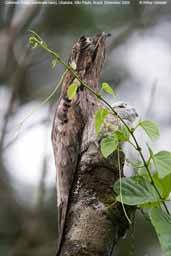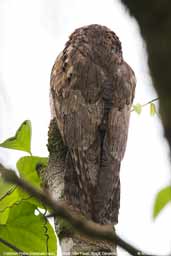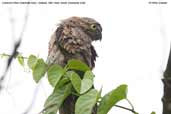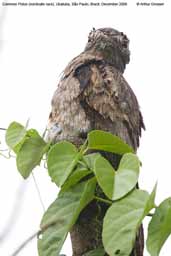Brazilian names: mãe-da-lua and urutua

The Common Potoo is distributed from Nicaragua through Central America to Colombia and most of northern South America, the Amazon Basin and south to northern Argentina and Uruguay. It is the commonest Potoo in Brazil and is found in a wide variety of habitats from forest to open woodland to grasslands and plantations.
It can vary in colour from grey to brown and it looks and behaves in many ways like a Tawny Frogmouth Podargus strigoides from Australia.
During the day it typically perches on a dead tree stump and blends in so well that it can be very difficult to see. Fortunately, it normally uses the same perch for a long period of time so, once spotted, it can easily be re-located.

I finally tracked it down during the day perched on a dead tree stump about 3 metres of the ground very close to a busy and noisy building site. It took me a long time before I noticed the chick almost hidden under its feathers.
This is a typical nest site - the bowl at the top of a tree stump - and it is unlined. The Common Potoo lays one egg which sits in this bowl while it is being incubated by both parents in turn. After hatching it is brooded for about 3 weeks being fed by both parents during the night.




| Previous Page | Back to Index | Next Page |